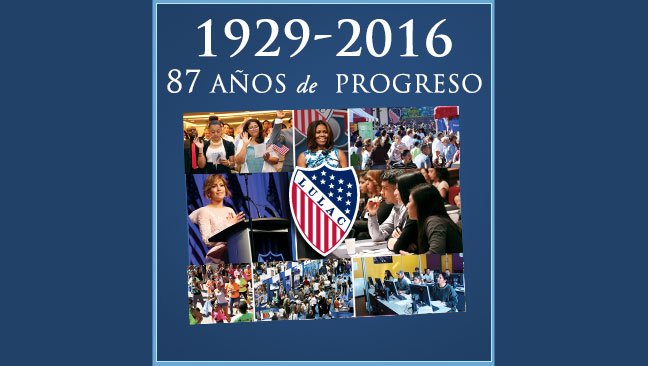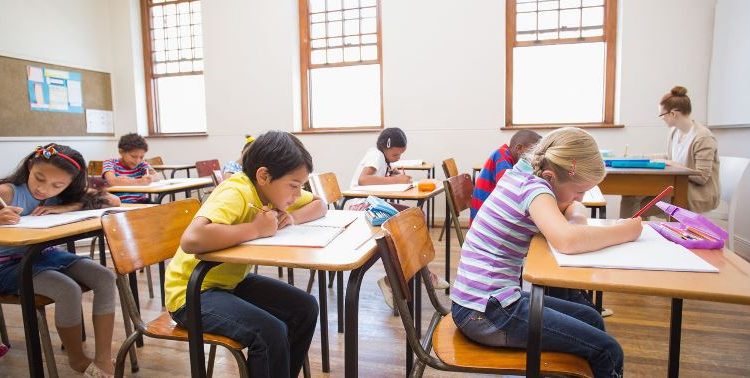América del Norte/Estados Unidos/Fuente:https://www.the74million.org/
Por: Matt Barnum.
Las investigaciones muestran que los maestros están determinadas por el clima de su escuela – los políticos han ignorado esto?
Ningún hombre es una isla». «El todo es mayor que la suma de sus partes».
En cierto modo, esto no parece lugares comunes para aplicar a la noción predominante de las escuelas. Los formuladores de políticas del presidente Obama para abajo se han centrado en el profesor individual como el lugar para la mejora. «[El] factor más importante en el aula es la calidad de la persona de pie en la parte delantera de la clase,» El presidente Obama ha dicho , haciéndose eco de muchos investigadores y políticos.
La administración ha presionado a los Estados para evaluar rigurosamente los maestros individuales y atar dichas evaluaciones a pagar, mandato, la promoción, y las decisiones de despido.
Pero es la clase de un profesor de su propia isla? ¿Qué pasa con sus colegas, su administrador, la cultura de su escuela, y la formación profesional que recibe? Algunos estudiosos y defensores han comenzado a preguntarse si nos hemos cargado demasiados huevos de política en el cesto «maestro individual» sin suficiente examen del contexto de un profesor – el director, los colegas, los recursos, las estructuras de apoyo y entorno de colaboración, entre otras cosas, que la práctica de la forma de instrucción.
«En los últimos quince años … realmente hemos asistido a la calidad individual [maestro] de una manera que se desvía nuestra atención de todos los demás factores que afectan la eficacia de alguien», dijo Susan Moore Johnson, profesor de educación en Harvard.
El caso de contexto:
Los investigadores señalan varios estudios en los últimos años sugieren que la cultura de una escuela – por lo general medido por las encuestas de los maestros – afecta tanto el rendimiento estudiantil y la retención de maestros.
Un estudio publicado a principios de este año a través de la NYU mostró que las escuelas intermedias de la ciudad de Nueva York donde los maestros reportaron una mayor seguridad en la escuela y más altas expectativas académicas también tuvieron ganancias en los logros más grandes.
Un informe de 2009 de la Universidad de Chicago encontró que los maestros eran menos propensosdejar 1 Chicago escuelas donde había altos niveles de confianza, la innovación y la responsabilidad colectiva de los docentes, así como un fuerte liderazgo. 2 «Creo que [contexto escolar] tiene una gran influencia en el grado en que los maestros pueden ser efectivos» dijo Elaine Allensworth, co-autor del estudio y director de la Universidad de Chicago Consorcio de Investigación de la Escuela.
El grado en que un maestro «encaja» o «coincidencias» con una nueva escuela también parece importar, según un estudio que muestra que los profesores a mejorar cuando cambian a una nueva escuela.
Otras investigaciones muestran que los directores afectan la retención de maestros en la ciudad de Nueva York; que la percepción de las condiciones de trabajo de los maestros están conectados al borde del rendimiento de los estudiantes en Carolina del Norte; que el acceso a recursos tales como instalaciones de calidad, libros de texto y las clases son pequeñas predecir la retención de maestros en California; que las escuelas que informaron una mayor colaboración tenían mayores calificaciones en las pruebas mejoras en Miami;que los maestros mejoren de forma más consistente con la experiencia si se encuentran en las escuelas con fuertes entornos profesionales; y que el maestro producir ganancias de rendimiento más altos cuando sus colegas son más eficaces.
El caso para el individuo :
Todo claro hasta ahora, ¿verdad? contexto escolar importa tanto para el rendimiento de los estudiantes y la rotación de maestros.
Pero la investigación en educación rara vez es así de simple. Otros estudios han documentado que las habilidades de los maestros son en gran medida portátil a través de las escuelas, lo que significa que en cierta medida se centran en el profesor individual está justificada.
Un importante estudio mostró que cuando un maestro de alto rendimiento cambió escuelas en la ciudad de Nueva York, el logro saltó en la nueva escuela; un estudio de Los Ángelesmostró resultados similares. Otro informe encontró que los profesores que se desplazan entre las escuelas de alta y baja pobreza en general, mantienen el mismo nivel de eficacia.Por último, un estudio experimental pagó maestros altamente eficaces para mover a las escuelas de bajo rendimiento; cuando lo hicieron, resultados de las pruebas se levantaron en sus nuevas escuelas. 3
Kirabo Jackson, un economista de la Northwestern que llevó a cabo el estudio sobre los efectos a juego maestro en Carolina del Norte, dijo: «Una gran cantidad de [calidad de los maestros] es portable a través de las escuelas, pero no es totalmente portátil.»
La investigación sobre el contexto también tiende a mirar a la correlación porque es difícil demostrar que la mejora de la cultura directamente aumenta la efectividad del maestro.Puede ser al revés: los maestros más eficaces conducen a mejores ambientes escolares.
Matt Kraft, un investigador en la Universidad Brown, que ha llevado a cabo varios estudios sobre el contexto de la escuela, dijo que él cree contexto da forma a los profesores, pero advierte que la investigación está todavía en su infancia. «Me gustaría advertir a nadie de forma proactiva diciendo que no es roca sólida evidencia de que el contexto escolar tiene un impacto causal sobre el borde del rendimiento de los estudiantes», dijo.
Aún así, la medida en que la política no se ha centrado en mejorar el contexto de las escuelas, la investigación puede subestimar el grado en que contexto se puede importar. En otras palabras, si se hicieron más y mejores esfuerzos para fortalecer el liderazgo de la escuela, el desarrollo profesional, y la colaboración, el impacto podría ser significativo.
El contexto es importante, pero no sabemos cómo mejorarlo:
Como suele ser el caso, la identificación de un área que necesita mejorar es mucho más fácil que el desarrollo de las políticas que impulsan la mejora. En pocas palabras, no hay sobre todo una fuerte evidencia de cómo fortalecer contexto escolar.
«Es muy difícil para las autoridades de manera positiva [afectan contexto de la escuela]», dijo Johnson, de la Universidad de Harvard. Un estudio en Carolina del Norte, por ejemplo, demostró que un programa federal de respuesta a la escuela aumentó maestros de tiempo pasaron a colaborar y recibir desarrollo profesional – pero en todo caso la impacto global en los estudiantes fue negativa. 4
Eso no quiere decir que la política no puede desempeñar un papel, pero no hay manera de obligar a la calidad colaboración y el desarrollo profesional.
No está claro si el enfoque predominante en los maestros individuales – en particular a través de nuevos sistemas de evaluación – ha ayudado o perjudicado. Allensworth señaló que de Chicago evaluación docente proceso da educadores mucha más información acerca de cómo llegar mejor que el pasado «lista de control» que había sido utilizado. Un estudio de evaluación en Cincinnati mostró que el sistema dio lugar a la mejora de los maestros.
Kraft dijo que el enfoque en la calidad de los maestros puede haber sido útil, pero que la aplicación ha sido desigual. «Estoy seguro de que hay casos en que las formas en que las escuelas y los distritos han actuado en [evaluación de los maestros] han subcotizarían que estaba interesado en la enseñanza en ese ambiente o la motivación y el esfuerzo de los maestros actuales.»
Entonces, ¿dónde nos deja eso?:
Hay algunas pruebas de prometedor. Un programa que simplemente emparejado maestros fuertes y débiles para trabajar en conjunto dio como resultado aumentos de rendimiento de los estudiantes . Kraft ha encontrado que el desarrollo profesional enfocado en el entrenamiento individualizado puede producir resultados. Otro programa que capacitó y dio tiempo para que los equipos de maestros de nivel de grado para trabajar en conjuntodio como resultado aumentos calificación en las pruebas . Los esfuerzos para crear una cultura que utiliza los datos para monitorear el progreso del estudiante y hacer los ajustes parecen ser fructífera.
En suma, las autoridades podrían considerar la asignación de tiempo y dinero para que los maestros regularmente colaboran, observar los salones, y servir como mentores – aunque no está claro si estos enfoques sería más rentable que, por ejemplo, aumentar los sueldos de los maestros o la reducción de tamaño de las clases.
La creación de un ambiente seguro y ordenado es también crucial. La suspensión de los estudiantes con mal comportamiento puede resultar contraproducente para la mejora del clima escolar y el rendimiento de los estudiantes; muchas escuelas están tratandodiferentes enfoques, tales como la justicia restaurativa, aunque hay poca evidencia empírica sobre la efectividad de estos nuevos modelos son.
Jackson dijo que permitir a los directores que tienen por ejemplo significativo en la contratación y el despido de los maestros pueden ayudar a conducir a mejoras y una cultura escolar más fuerte – aunque por supuesto que depende de tener un líder de la escuela efectiva. Y no hay una gran cantidad de consenso sobre la mejor manera de contratar, mantener y evaluar los directores.
Vueltas y vueltas el debate continúa, desafiando las respuestas fáciles y políticas claras.
Si bien hay buenas razones para creer que ningún maestro es una isla, se sabe mucho menos acerca de cómo crear comunidades escolares capaces de ayudar a los profesores a mejorar y hacer que quieran quedarse.
Pero por lo menos con el conocimiento de la importancia del contexto, los políticos con más determinación podrían tratar de mejorarlo y estudiar lo que es y no está funcionando.
Fuente: https://www.the74million.org/article/which-comes-first-good-teachers-or-a-good-school-yes
Imagen: http://cdn.theconversation.com/files/103823/width1356x668/image-20151201-26574-14przoc.jpg



















 Users Today : 3
Users Today : 3 Total Users : 35460782
Total Users : 35460782 Views Today : 7
Views Today : 7 Total views : 3419994
Total views : 3419994